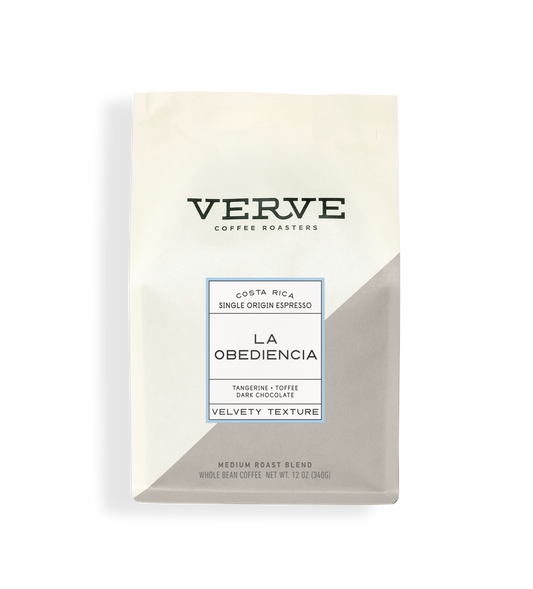SOE Single Origin Espresso – Highlighting Flavors from One Region
SOE Single Origin Espresso – Highlighting Flavors from One Region
Blog Article
Comprehending Coffee Beans: the Journey From Espresso to Blended Coffee Beans

The Origins of Coffee: An International Viewpoint
While you could believe of coffee as a contemporary staple, its beginnings map back centuries, linking with cultures across the globe. The tale begins in Ethiopia, where tale claims a goat herder named Kaldi discovered the invigorating results of coffee beans after observing his goats frolicking vigorously after consuming them.
As trade routes increased, coffee made its means to Europe in the 17th century, swiftly acquiring appeal. It changed from a magical drink into a day-to-day routine, motivating events and intellectual exchanges. Each society added its distinct spin to coffee preparation, enriching its history. This international trip highlights just how coffee links us, transcending boundaries and unifying diverse practices via a basic bean.
Cultivation and Harvesting of Espresso Beans
As coffee's trip developed, the emphasis moved to the growing and harvesting of details bean selections, specifically those made use of for espresso. You'll find that coffee beans commonly come from Arabica or Robusta plants, each offering distinct tastes. The perfect growing problems include high altitudes and rich, well-drained dirt, which enhance the beans' quality.
During the harvest, selecting techniques differ. In some areas, workers hand-pick ripe cherries, making sure only the very best fruit goes to processing. In other areas, mechanical farmers are utilized, especially on larger farms. When the cherries reach peak ripeness for optimum flavor., timing is crucial; you want to harvest.
When gathered, the beans are gotten ready for handling, which is necessary in establishing their last preference. Recognizing the cultivation and gathering processes gives you understanding into what goes into your favorite espresso, improving your admiration for each and every cup.
Handling Approaches: From Cherry to Bean
Now that you've learnt more about gathering espresso beans, let's discover how those cherries change into the coffee beans you enjoy. You'll see exactly how various harvesting methods influence flavor, adhered to by the crucial actions of fermentation and drying out. Ultimately, we'll damage down the milling and grading procedure that identifies your coffee's top quality.
Harvesting Strategies Explained
When it comes to coffee, recognizing harvesting strategies is important, given that they directly influence the taste and top quality of the beans you take pleasure in. Careful selecting involves hand-picking just ripe cherries, ensuring you get the ideal high quality beans. Inevitably, the choice of collecting method can greatly affect your coffee experience, so it's worth knowing how those beans made it to your cup.
Fermentation and Drying Out
After collecting, the next action in handling coffee beans play a substantial function in shaping their flavor. You'll find that fermentation is crucial, as it assists damage down the mucilage surrounding the beans, boosting their preference account. Relying on the method, this process can last from a few hours to a number of days, with varying results based on temperature level and moisture.
Sun-drying permits the beans to soak up flavors from the setting, while mechanical drying out assurances consistent moisture levels regardless of climate. Proper drying out is vital to prevent mold and maintain the beans' quality, eventually affecting your mug of coffee.
Milling and Grading Refine
As fermentation and drying out set the phase for flavor growth, the milling and grading procedure guarantees that just the finest coffee beans make it to your mug. This phase involves getting rid of the outer layers of the coffee cherry, including the parchment and husk. High-grade beans get a greater grade, resulting in a richer coffee experience.
Toasting Techniques: Unlocking Flavor Potential
When you roast coffee beans, the technique you select can considerably impact the flavor profile. Recognizing the relationship between time, temperature level, and toasting strategies is essential to disclosing the possibility of your mixture. Allow's explore just how these aspects integrated to develop the excellent mug.
Roasting Approaches Clarified
While you might assume that all coffee toasting approaches yield the very same outcomes, the truth is that each technique reveals one-of-a-kind flavor potentials in the beans. Drum roasting makes use of a turning drum to evenly disperse warmth, boosting caramelization and producing a well balanced flavor. Air roasting, on the other hand, distributes hot air around the beans, advertising a lighter roast with noticable level of acidity.

Influence on Flavor Profile
Different toasting methods not just influence the process Look At This however also greatly affect the taste profile of the coffee beans. Dark roasts, on the various other hand, bring out strong, great smoky flavors, in some cases covering up the bean's one-of-a-kind features. Comprehending these subtleties assists you appreciate the virtuosity behind your mug of coffee, enhancing your total experience with every sip.
Time and Temperature Level Elements
To release the full taste capacity of coffee beans, both time and temperature throughout the roasting process play significant functions. When roasting, you'll locate that higher temperature levels can quickly create flavors, but if you rush it, you might finish up with burned notes. Alternatively, reduced temperature levels permit a more gradual taste growth, showcasing the beans' special qualities.

Timing is simply as crucial; extending the roast too long can lead to a loss of level of acidity and illumination, while as well brief a roast might leave the beans underdeveloped. Discovering that sweet area requires practice and experimentation. By readjusting these factors, you can expose the abundant, complex flavors hidden within each bean, producing an absolutely remarkable coffee experience.
The Art of Blending: Crafting Distinct Coffee Accounts

Start by selecting a base coffee that supplies a solid structure. An intense Ethiopian bean can bring fruitiness, while an abundant Brazilian coffee includes body.
As you blend, bear in mind that each combination informs a tale. You're not simply making coffee; you're developing an experience. Take your time, taste regularly, and take pleasure in the trip of discovering your trademark blend - Single Origin Espresso.
Brewing Methods: Just How Prep Work Impacts Flavor
Mixing coffee opens up a domain name of taste possibilities, however how you make that mix can considerably affect your final cup. Various developing techniques remove one-of-a-kind flavors and scents, so it's essential to pick intelligently. A French press my blog enables sediments and oils to stay, producing a rich, robust experience. On the other hand, a pour-over highlights the coffee's quality and illumination, best for showcasing delicate notes.
Espresso, with its high stress, generates a focused shot that emphasizes sweet taste and crema. If you choose a lighter mixture, consider a cold brew method; it yields a smooth, much less acidic taste.
Inevitably, trial and error is vital. Changing variables like water temperature level, grind size, and make time can transform your coffee's profile. Embrace the art of brewing to find the tastes hidden in your coffee blends. The right technique can raise your experience to new heights.
The Future of Coffee: Sustainability and Technology
As the coffee market evolves, sustainability and innovation are becoming necessary for attending to ecological obstacles and conference consumer demands. You'll discover that more coffee business are adopting green methods, from sourcing beans fairly to implementing lasting farming techniques. These changes not only assist the world however likewise boost the top quality of the coffee you enjoy.
You could see advancements like naturally degradable packaging and water-saving brewing techniques that decrease waste. Advanced innovation, such as blockchain, is likewise coming to be prominent, making sure openness in the supply chain, which allows you to trace your coffee back to its beginnings.
Additionally, buying neighborhood neighborhoods and supporting farmers via reasonable profession initiatives cultivates an extra lasting coffee environment. As you sip your following cup, keep in mind that your choices can add to a brighter future for coffee. By choosing sustainable brands, you're not just delighting in a drink; you're making a favorable influence on the world.
Frequently Asked Questions
What Is the Difference In Between Arabica and Robusta Beans?
Arabica beans are smoother, sweeter, and have a greater level of acidity, while robusta beans are stronger, more bitter, and include even more caffeine. When making your coffee., you'll observe these distinctions in flavor and scent.
How Does Altitude Affect Coffee Bean Taste?
Altitude impacts coffee bean taste considerably. Higher elevations generate beans with brighter level of acidity and complicated tastes, while lower elevations typically yield beans that are heavier and less nuanced. You'll observe these distinctions in your mug!
What Are the Wellness Advantages of Drinking Coffee?
Consuming alcohol coffee can boost your power, enhance psychological emphasis, and even improve physical efficiency. It's rich in antioxidants, might reduce the best site risk of particular illness, and can promote a much healthier metabolic rate when consumed in small amounts.
Can Coffee Beans Be Recycled for Brewing?
Yes, you can reuse coffee beans for developing, but the taste could be weak. If you enjoy exploring, attempt recycling them in different ways, like cold mixtures or contributing to smoothies for an additional kick.
Just how Should I Store Coffee Beans for Freshness?
To maintain your coffee beans fresh, save them in a closed container in a great, dark place. Stay clear of subjecting them to moisture, heat, or light, as these elements can promptly weaken their taste and scent.
Understanding Coffee Beans: the Trip From Coffee to Blended Coffee Beans.
Now that you have actually found out concerning gathering coffee beans, let's check out exactly how those cherries change right into the coffee beans you like.When you roast coffee beans, the technique you select can considerably influence the taste account - Single Origin Espresso.While you may think that all coffee roasting techniques yield the same results, the reality is that each technique reveals one-of-a-kind taste possibilities in the beans.Different toasting approaches not just influence the process but likewise substantially affect the flavor account of the coffee beans
Report this page